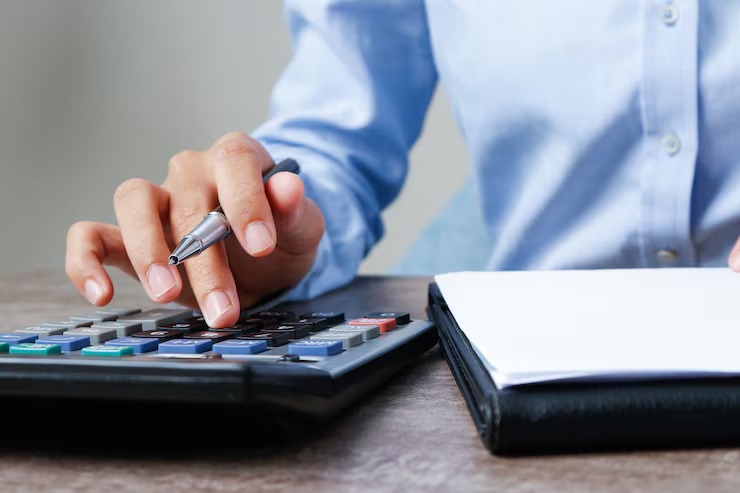
If you are new to investing and want an exciting, high-speed market, Forex trading may be the place for you. The foreign exchange market, or Forex, is the largest and most liquid financial market in the world, with a total daily trade volume of over $7 trillion. It operates 24 hours a day, five days a week, connecting global currencies like the US Dollar, Euro, British Pound, and many others. But for beginners, entering this world can be overwhelming. This guide is designed to help you understand the basics of how to start trading Forex as a beginner.
What Is Forex Trading?
Forex trading, at its simplest, is trading one currency for another in order to make a profit. You buy one, you sell another. Currency pairs are quoted, e.g., EUR/USD, where the base currency (EUR) is the first, and the second is the quote currency (USD). The price indicates how much of the quote you will need to purchase a single unit of the base.
For instance, if EUR/USD = 1.1000, then 1 Euro is equal to 1.10 US Dollars.
You earn on the difference in exchange rates, based on whether the value of your currency pair increases or decreases after your trade.
Why Trade Forex?
The following are some reasons why individuals opt to trade Forex:
- High Liquidity: The vast quantity guarantees easy entry and exit most time.
- 24-Hour Market: Trade at any time between Monday to Friday between various global time zones.
- Low Barrier to Entry: Most brokers provide demo accounts, minimal deposits, and leverage, so it is easy for beginners.
- Diverse Strategies: Short-term scalping to long-term position trading, there’s space for all styles.
Step-by-Step Guide to Start Forex Trading
1. Understand the Forex Market
Before risking even a penny, you must have a clear idea about:
- Currency pairs: Major, minor, and exotic.
- Pip: Price movement’s smallest unit.
- Lot size: Mini (10,000), micro (1,000), and standard (100,000 units).
- Leverage and margin: Leverage exaggerates gains (and losses); margin is the funds you must use to open a position.
- Bid-ask spread: The bid price and offer price of a currency pair.
Learning about these basics is the beginning of being a successful Forex trader.
2. Select a trusted Forex broker
A Forex broker serves as an intermediary between you and the interbank foreign exchange market. When choosing a broker, look at:
- Regulation: You should use brokers regulated by reputable financial authorities such as FCA (UK), NFA (US), ASIC (Australia), or SEBI (India).
- Spreads and commissions: The lesser cost means the greater profit.
- Speed of execution: Delays can ruin your profitability.
- Leverage options: More is not necessarily better — make sure you understand the risks.
- User interface: MetaTrader 4/5 or custom dashboards should be easy to use.
- Customer support: 24/7 support is a requirement for 24/7 trading.
Some of the most popular beginning brokers are IC Markets, Pepperstone, FXTM, and Exness.
3. Open a Demo Account
Never begin with real money. Most brokers provide a demo trading account mimicking live market conditions. Use this to:
- Practice ordering (buy/sell).
- Try out strategies.
- Get familiar with price movement and volatility.
- Learn to control emotions under stress.
Invest a few weeks or even months in the demo. Consistency and comprehension are the aim, not quick profit.
4. Deposit Funds and Select a Currency Pair
Having tested, you can open a live Forex account and deposit funds with your preferred method of payment (bank transfer, card, or e-wallet). Begin low-key — you can always add capital after you feel confident.
Next, select your currency pair. Newbies tend to remain with major pairs such as:
- tEUR/USD
- tGBP/USD
- tUSD/JPY
- tUSD/CHF
They’re the most liquid and lowest spread, so they’re best for new traders.
5. Learn and Implement a Trading Strategy
Gut feeling doesn’t work in Forex trading. You require a proven trading strategy. Some of the most popular ones are:
- Trend following: Go long when the price is up, sell when it’s down.
- Breakout trading: Trade when the price breaks key support/resistance levels.
- Range trading: Look for areas of horizontal price movement.
- Scalping: Trade dozens of times for slight profits.
- Swing trading: Hold trades for days to ride out price swings.
Regardless of what strategy you employ, always set your entry point, stop-loss, and take-profit levels.
6. Become an Expert at Technical Analysis
Technical analysis is the most common technique used by Forex traders. It involves using charts, patterns of prices, and indicators to forecast future price movements. Skills you will need to know include:
- Moving Averages (MA)
- Relative Strength Index (RSI)
- MACD (Moving Average Convergence Divergence)
- Bollinger Bands
- Support and Resistance
These help you identify potential points of entry and exit.
7. Learn to Interpret the Role of Economic News
The Forex market is strongly affected by macroeconomic events like:
- Interest rate decisions
- Employment reports (e.g., NFP)
- Inflation reports
- Geopolitical tensions
Monitor economic calendars so you do not trade during extremely volatile news releases — unless you are advanced at news trading.
8. Risk Management: The Survival Key
Most traders lose not due to poor strategy but inadequate risk management. Safeguard your capital with these guidelines:
- Risk only 1–2% of your account on each trade.
- Utilize stop-loss orders to cap possible losses.
- Don’t trade too much — quality beats quantity.
- Don’t use high leverage unless you know what you’re doing.
- Diversify your trades: Don’t bet everything on one currency pair.
Good risk management in Forex enables you to remain in the game long enough to become profitable.
9. Create a Trading Journal
A trading journal assists you in tracking:
- Entry/exit points.
- Your rationale for each trade.
- Emotions experienced during the trade.
- Outcomes and gains.
Analysing your journal each week identifies patterns and errors — resulting in ongoing improvement.
10. Control Your Emotions
Discipline is the intangible edge that distinguishes winners from losers. The most prevalent emotional traps are:
- Greed: Greed to make quick profits.
- Fear: Closing trades prematurely or not entering.
- Overconfidence: Disregarding rules after a successful string of trades.
- Frustration: Revenge trading due to losses.
Stay true to your strategy and believe in your system.
Avoid These Common Mistakes
- Trading aimlessly.
- Disregarding fundamental analysis.
- Overleveraging positions.
- Not employing stop-losses.
- Switching from one strategy to another.
- Mindlessly copying signal providers or gurus.
These mistakes may sabotage your chances of success. Avoid them.
Should You Use Forex Robots or Signals?
Some new traders are lured by Forex robots (EAs) or signal services that offer easy gains. Although these can benefit advanced traders, saving time, they are dangerous for new traders.
- Robots function under particular conditions and can fail under changing markets.
- Risk level or reasoning is not revealed by signal providers.
It’s wise to learn manual trading first and study the market. Then only you can assess automated aids properly.
How Much Capital Do You Need to Start?
You can begin forex trading with as little as $100; however, this will limit your flexibility. A good rule of thumb:
- $500–$1,000: Enough for micro lot trading.
- $2,000+: Will allow you to do better diversification and lower the risk per trade.
Focus on developing consistent skills rather than trying to gain profits.
When Should You Go Full-Time?
Quit your job to trade on a full-time basis only when:
- You have traded profitably for 6–12 months consecutively.
- You have a minimum of 6 months’ worth of expenses in reserve.
- You can cope with the mental highs and lows.
Most successful Forex traders approach Forex like a business — with discipline, strategy, and patience.
Final Thoughts
Learning the basics of getting started with Forex trading as a beginner can lead to new and exciting possibilities — but it takes dedication. Avoid falling for instant success promises. Begin with a modest investment, continue to learn, and work on risk management and strategy. With time, dedication, and practice, you can mature from a beginner to a seasoned Forex trader.







